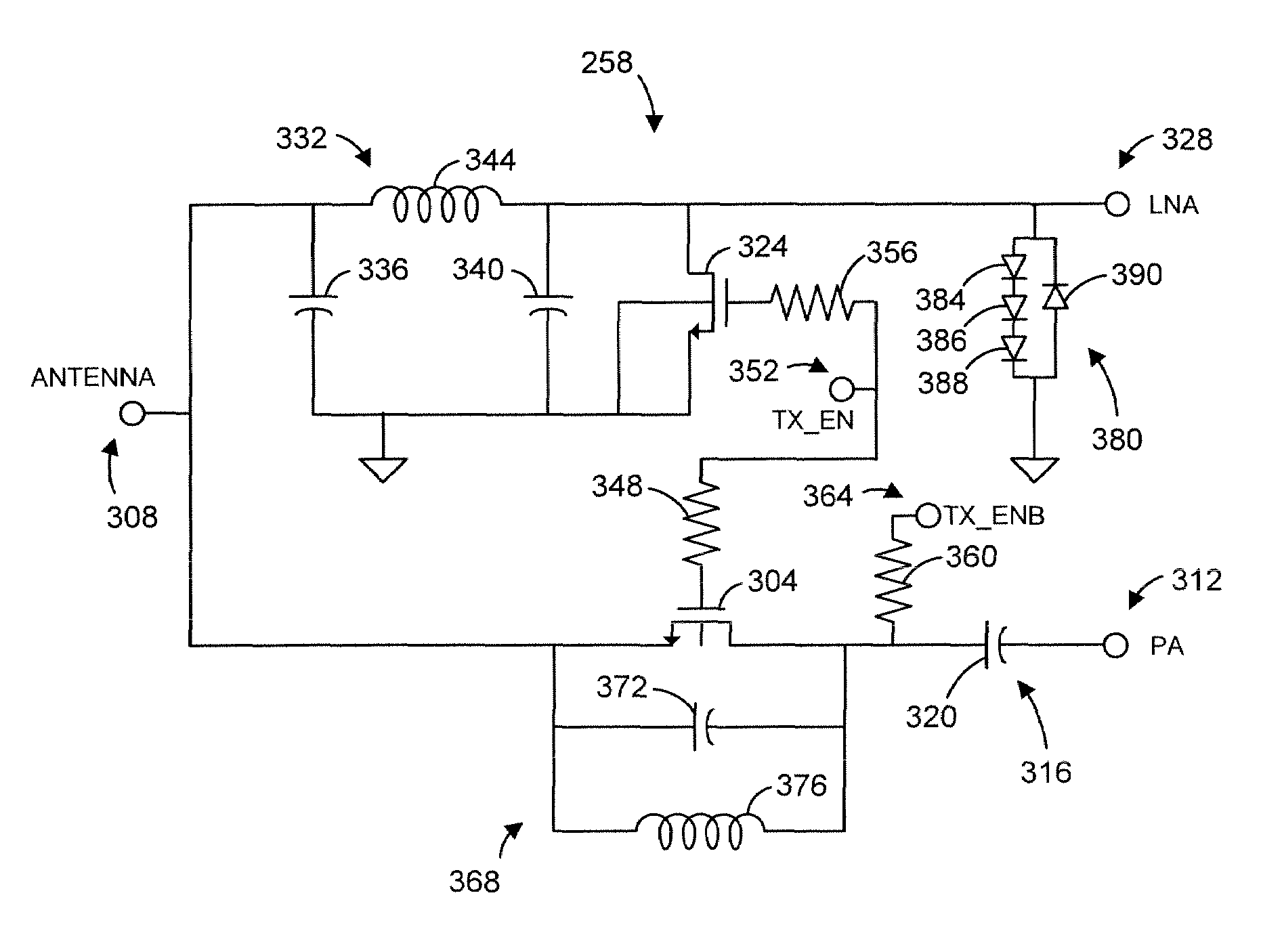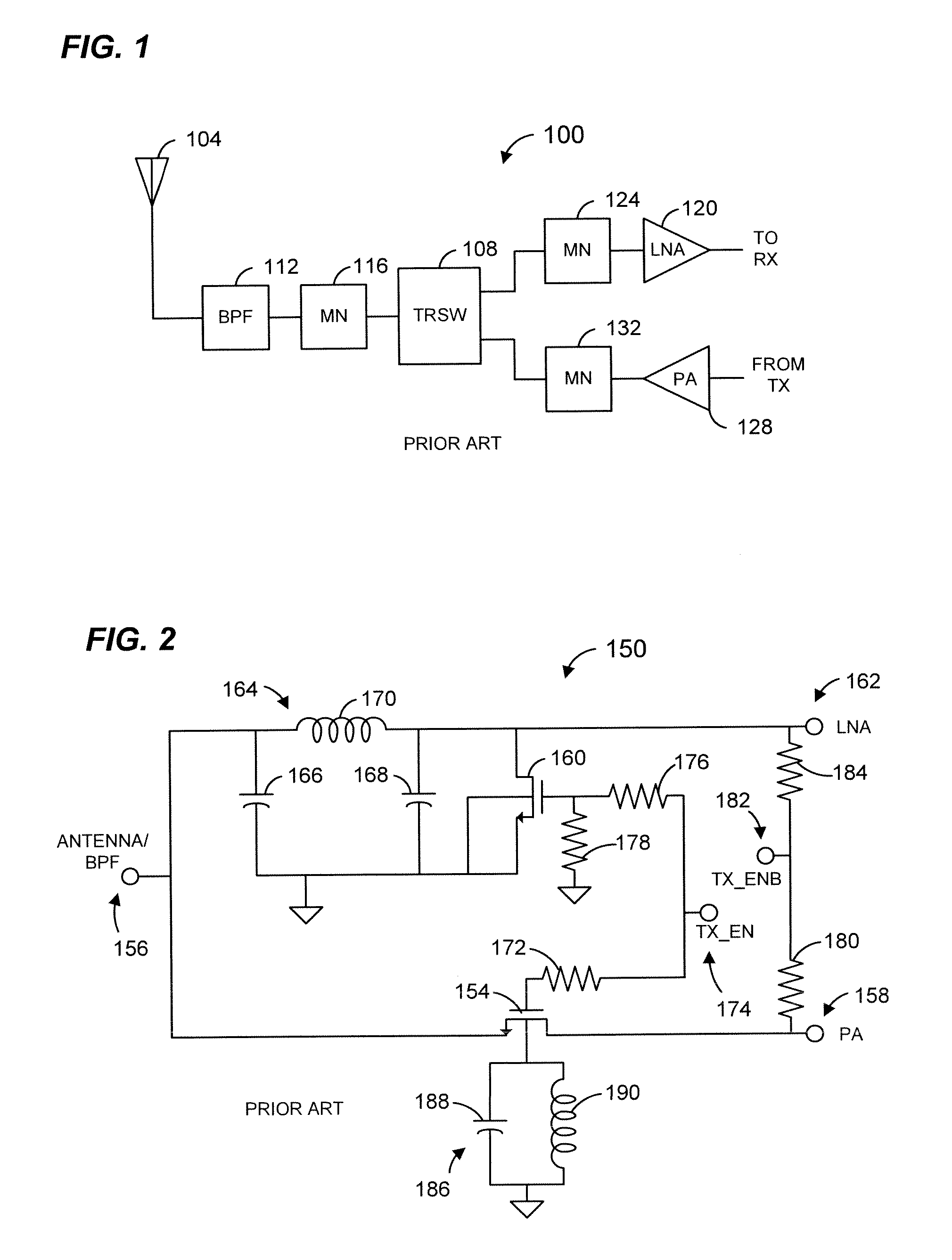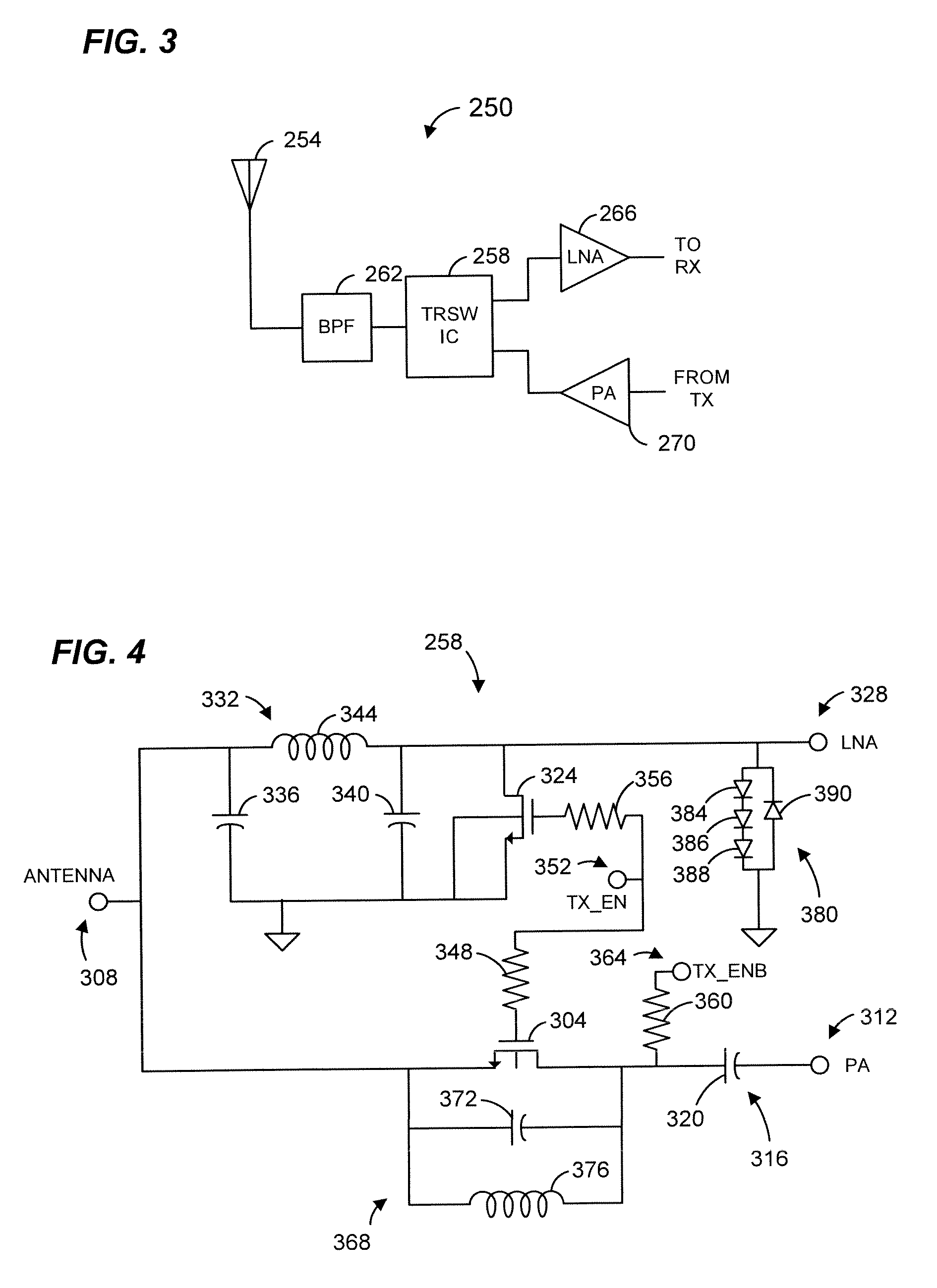Transmit/receive switch device
- Summary
- Abstract
- Description
- Claims
- Application Information
AI Technical Summary
Benefits of technology
Problems solved by technology
Method used
Image
Examples
Embodiment Construction
[0034]FIG. 3 is a block diagram of an example front end 250 of a transceiver that may utilize an example transmit / receive (T / R) switch to be described in more detail below. The front end 250 can be utilized in a variety of wireless communication devices such as wireless network cards, wireless access points, wireless routers, cellular telephones, personal digital assistants (PDAs) having wireless communication capability, etc. The front end 250 may include an antenna 254 coupled to a T / R switch device 258 via a band pass filter 262. As described above, the T / R switch device 258 may be implemented using standard CMOS fabrication techniques, and thus may be implemented as an integrated circuit (IC). The T / R switch device 258 may be coupled to an input of a low noise amplifier (LNA) 266 and may be coupled to an output of a power amplifier (PA) 270. During transmission, the T / R switch device 258 may couple the PA 270 to the antenna 254. Additionally, the T / R switch device 258 may isolat...
PUM
 Login to View More
Login to View More Abstract
Description
Claims
Application Information
 Login to View More
Login to View More - R&D
- Intellectual Property
- Life Sciences
- Materials
- Tech Scout
- Unparalleled Data Quality
- Higher Quality Content
- 60% Fewer Hallucinations
Browse by: Latest US Patents, China's latest patents, Technical Efficacy Thesaurus, Application Domain, Technology Topic, Popular Technical Reports.
© 2025 PatSnap. All rights reserved.Legal|Privacy policy|Modern Slavery Act Transparency Statement|Sitemap|About US| Contact US: help@patsnap.com



